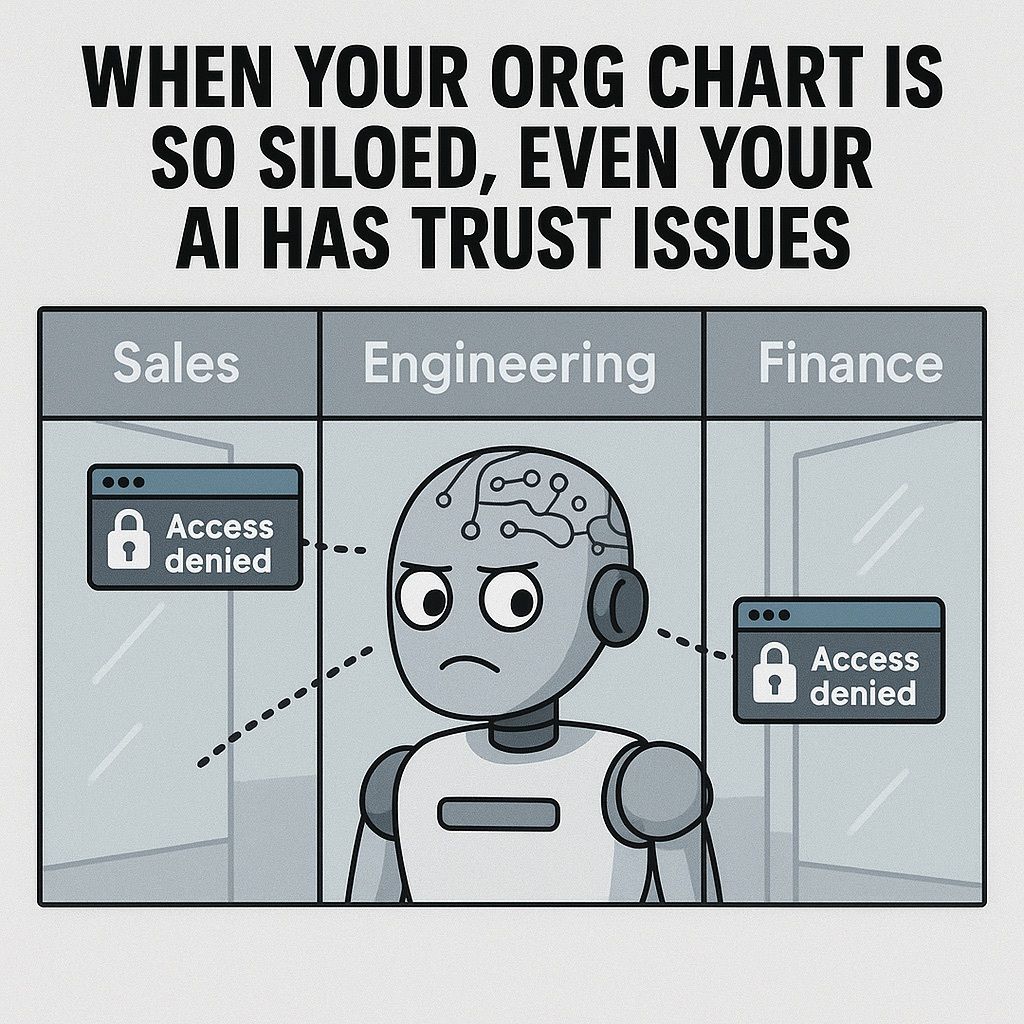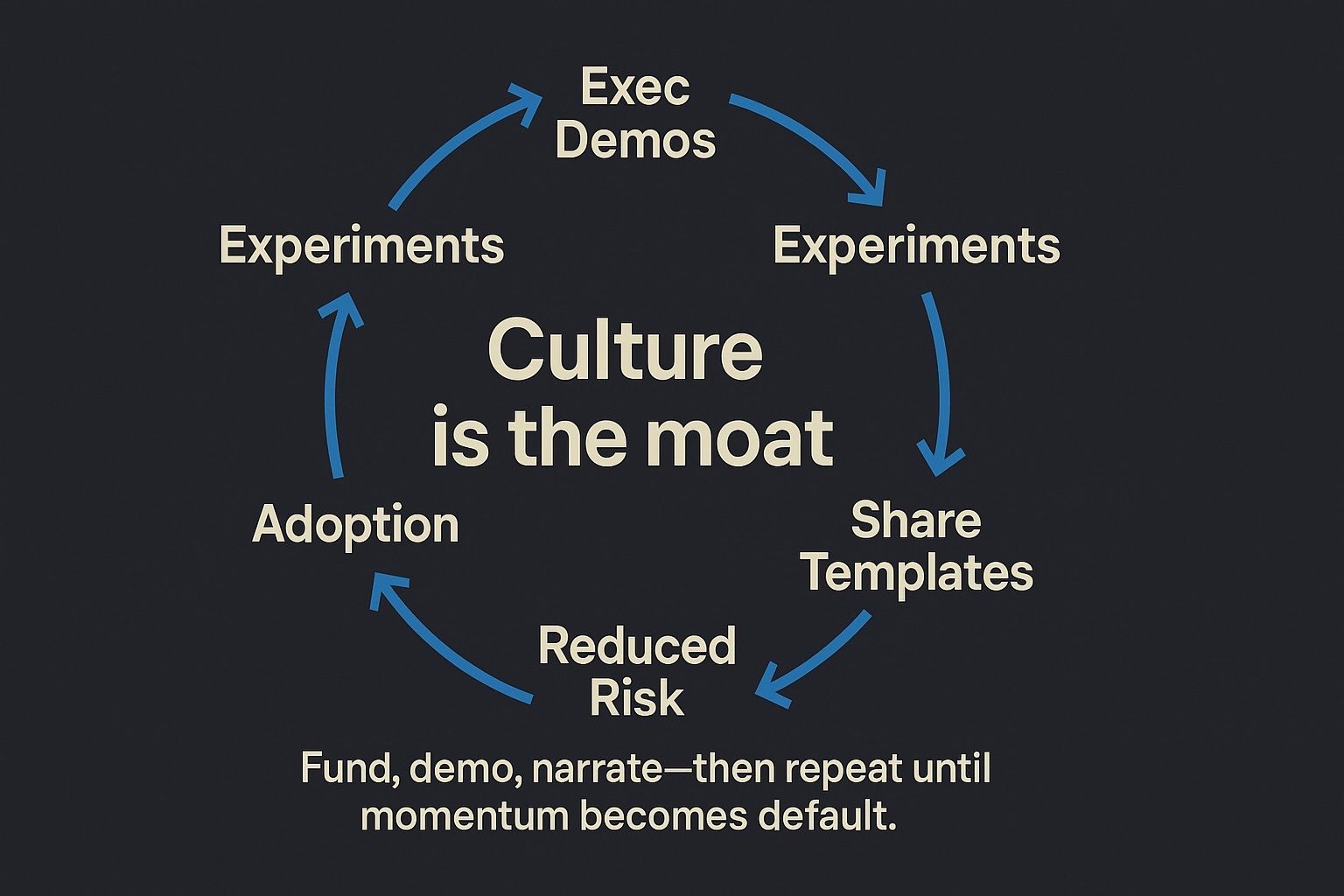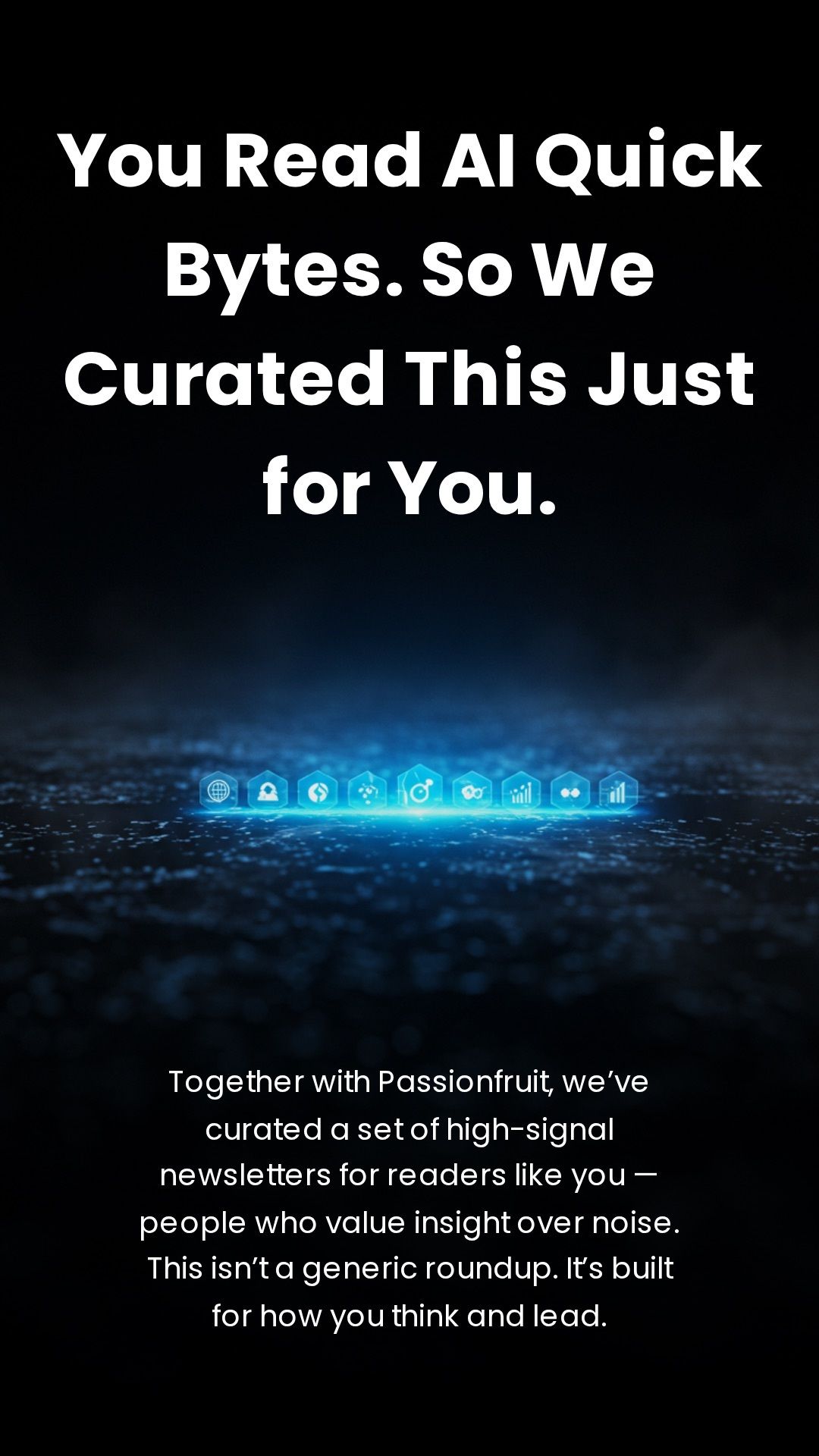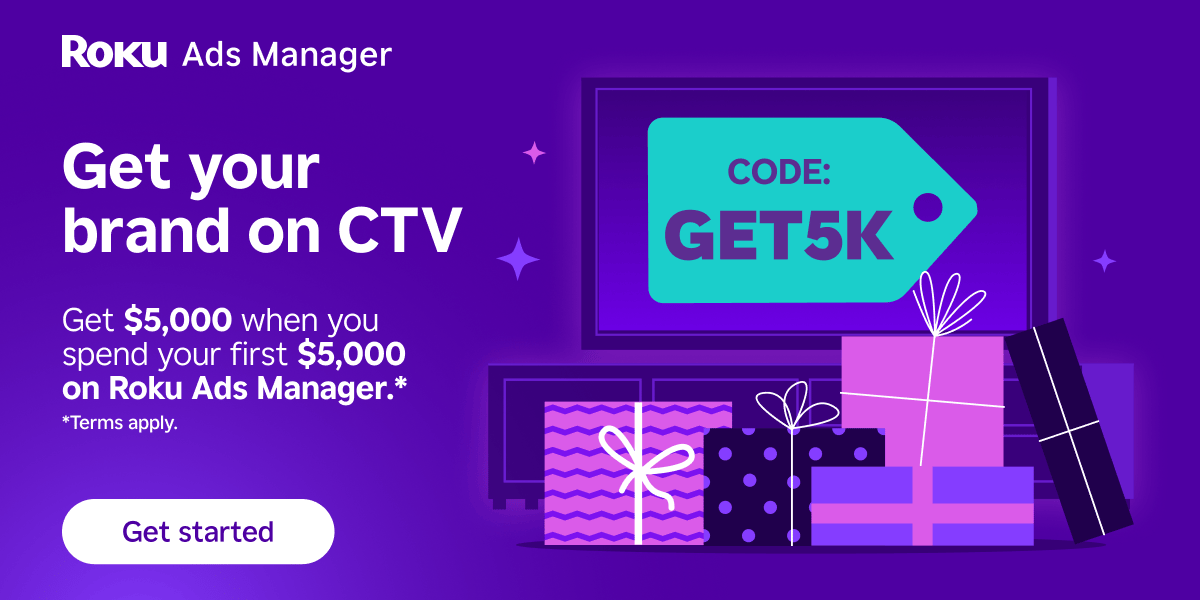8 bits for a Byte: You asked for my current, working playbook—battle-tested with teams this month. The core: centralize for scale, keep a human-in-the-middle loop, and turn culture into a compounding moat. I’m iterating daily to make this newsletter sharper and more useful; below are eight crisp Bits you can put to work this quarter.
Tell me what landed—the quick survey at the end directly shapes what I create next.


Let’s Get To It!

Welcome To AI Quick Bytes!
Bit 1: ORG CHART VS. AI REALITY
Centralization is the unlock for AI scale. By pulling engineering, design, and data into a shared core, you reduce duplication, shorten time-to-adoption, and align incentives. The architecture that wins is the org chart you actually run.
Bit: AI doesn’t fix silos; I fix silos so AI can compound.
Three Key Takeaways:
Centralize engineering, design, and data—build once, scale everywhere.
Conway’s Law still rules: your structure shapes your software.
Tech at the center = tech-first identity and measurable productivity gains.
Action Summary: Audit reporting lines and collapsing duplicate AI work across BUs this week.
Map ownership: list all AI projects by BU; highlight duplicates and shared needs (1 day).
Stand up a central “AI Platform” function with a TL; publish a 1-page mandate (role-based access control, tooling, standards).
Move design systems, model serving, and prompt libraries under the platform team.
Create a shared intake form for new AI requests; require platform sign-off before build.
Schedule a 30-min exec review to approve the new reporting lines.

Quote of the Week:
The future belongs to those who see AI as not just a tool, but as a partner in reimagining what's possible."

Bit 3: THE HUMAN-IN-THE-MIDDLE FLYWHEEL
Treat AI as a collaborative teammate, not a handoff. The loop—draft → principal review → spec → code → refine—turns context into compounding quality. It compresses cycle time because every pass increases fidelity and reduces rework.
Three Key Takeaways:
Feed the loop enterprise context (Jira, Slack, Google, GitHub).
AI plays principal engineer; humans raise quality and mentor juniors.
Collaboration beats handoffs—months shrink to days.
Action Summary: Experiment with weekly Human In The Middle (HITM) sprints so this loop becomes muscle memory across two teams.
Create a reusable “HITM Sprint” checklist (context pack, draft prompt, review gates).
Configure tool access: connect repos, docs, and tickets to your coding/chat models with read-only scopes.
Pilot on one backlog item per team this week; measure cycle time and review defects.
Add a 15-min “spec hygiene” gate before coding begins.
Capture prompts and diffs in a shared playbook; iterate weekly.

Find customers on Roku this holiday season
Now through the end of the year is prime streaming time on Roku, with viewers spending 3.5 hours each day streaming content and shopping online. Roku Ads Manager simplifies campaign setup, lets you segment audiences, and provides real-time reporting. And, you can test creative variants and run shoppable ads to drive purchases directly on-screen.
Bonus: we’re gifting you $5K in ad credits when you spend your first $5K on Roku Ads Manager. Just sign up and use code GET5K. Terms apply.

Bit 4: TOOLS AREN’T (YET) PROACTIVE
Today’s models excel at targeted work, not unsupervised discovery. Leaders/Humans create leverage by noticing sooner—framing the right questions, exposing unknowns, and pointing AI at the highest-value gaps.
If we don’t ask, they don’t solve; leadership means noticing faster.
Three Key Takeaways:
Today’s tools won’t find unknown problems—point them at what matters.
Awareness and prompting discipline still unlock most value.
Surface assumptions early so AI can help.
Action Summary: Add “Assumptions & Unknowns” as slide 2 in all product/tech reviews.
Teach teams a simple question set: What’s the core risk? What data would change our mind? What’s the cheapest test?
Use AI to draft risk lists; humans prune and prioritize.
Run a 45-min assumption-busting workshop for PMs/EMs this week.

Bit 5: ROLES WILL CHANGE (THAT’S GOOD)
AI rebalances work, not worth. Engineers move up-stack to system design and code review; leaders and ICs learn in public to normalize change. The win is higher quality, happier teams, and better outcomes. Titles don’t vanish; responsibilities pivot—so we get hands-on now.
Three Key Takeaways:
Engineers shift from first-pass coders to reviewers, curators, and systems thinkers.
Execs and ICs use the tools weekly—learn what breaks and why.
Real adoption = happier work + better margins.
Action Summary: Kick-off “AI reps” (30 min/week) for all levels: demo, debrief, ship.
Define new RACI: AI drafts, senior reviews, QA owns guardrails.
Create rubric for reviews (correctness, safety, maintainability, perf).
Pair a senior engineer with a junior during AI-assisted tasks for coaching.
Update job ladders with AI competencies and example behaviors.

Bit 6: Sunday Funnies


An espresso shot for your brain
The problem with most business news? It’s too long, too boring, and way too complicated.
Morning Brew fixes all three. In five minutes or less, you’ll catch up on the business, finance, and tech stories that actually matter—written with clarity and just enough humor to keep things interesting.
It’s quick. It’s free. And it’s how over 4 million professionals start their day. Signing up takes less than 15 seconds—and if you’d rather stick with dense, jargon-packed business news, you can always unsubscribe.

Bit 7: DEMOCRATIZE AI BEYOND ENGINEERING
Value accelerates when non-technical teams can prototype safely. Put low-code tools and approved patterns in their hands, so customer, legal, and ops work can iterate without the IT queue—and share wins to compound adoption.
When non-technical teams can build, the company stops waiting and starts leading.
Three Key Takeaways:
Put tools in the hands closest to customers, regulators, and ops.
Distributed prototyping becomes your agility moat.
Open patterns (and open-source when viable) speed adoption inside and out.
Action Summary: I’m asking each non-tech function to nominate one process to automate this quarter.
Run a “No-Code AI Day” for CS, Sales Ops, Finance, Legal (2 hours, guided builds).
Publish three sanctioned patterns: summarization, routing/triage, data cleanup.
Offer a light-touch review path (security + platform) for go-live.
Stand up a showcase channel: short Looms of wins and lessons.
Track time (Cycle Time from idea to production implementation) saved per use case; prioritize scale-out of the top two.


Bit 8: CULTURE COMPOUNDS FASTER THAN FEATURES
Tools change monthly; culture compounds forever. Leaders who model curiosity, fund experiments, and narrate outcomes build a flywheel—knowledge spreads, risk drops, and shipping cadence quickens. Tools can be copied; a learning-first culture can’t—and that’s the real moat.
Three Key Takeaways:
Leaders go first: test AI, sponsor hack weeks, narrate wins and misses.
Top-down visibility turns experiments into momentum.
Make AI everyone’s job and the flywheel keeps spinning.
Action Summary: Schedule exec-led show-and-tells and a monthly AI hackathon.
Put one exec on the agenda each week to demo their own AI use.
Budget a monthly mini-hack (3 hours) with a “ship or share” rule.
Add a #ai-wins channel; require format: problem → approach → result → template.
Recognize two behaviors publicly: useful failures and reusable patterns.
Bake “AI usage” into quarterly goals for managers.

Inspiration For This Newsletter: Go to the source and view the below at 1.5 speed. Lenny’s newsletter - A great podcast with interviews with leading tech / product leaders that I can not recommend highly enough—tighten your next product decision in minutes. I get referral credit if you sign up, so help a brother out!
Until next time, take it one bit at a time!
Rob
P.S. Thanks for making it to the end—because this is where the future reveals itself.
TODAY’S GAINS ARE THE FLOOR, NOT THE CEILING
Early productivity wins are the baseline, not the victory lap. As agents take on anticipatory work, revisit KPIs, staffing, and SLAs each quarter to reallocate talent toward judgment, creativity, and customer impact. The “8–10 hours saved” headlines are lap one—keep raising the baseline.
Three Key Takeaways:
Treat current productivity as a starting line; reset targets quarterly.
As agents take on cross-functional, anticipatory work, 9-to-5 gets rewritten.
Redeploy humans to judgment, creativity, and customer impact.
Action Summary: Revisit/Reset AI KPIs every quarter—new floors, new targets, new talent allocations. Yes it is moving that fast!
Define three AI KPIs per team (e.g., cycle time, defect rate, hours shifted to customer work).
Establish quarterly “raise the floor” reviews—retire old baselines, set new ones.
Move 10% of time saved into a funded innovation backlog.
Publish a quarterly AI scorecard to executives and teams.




